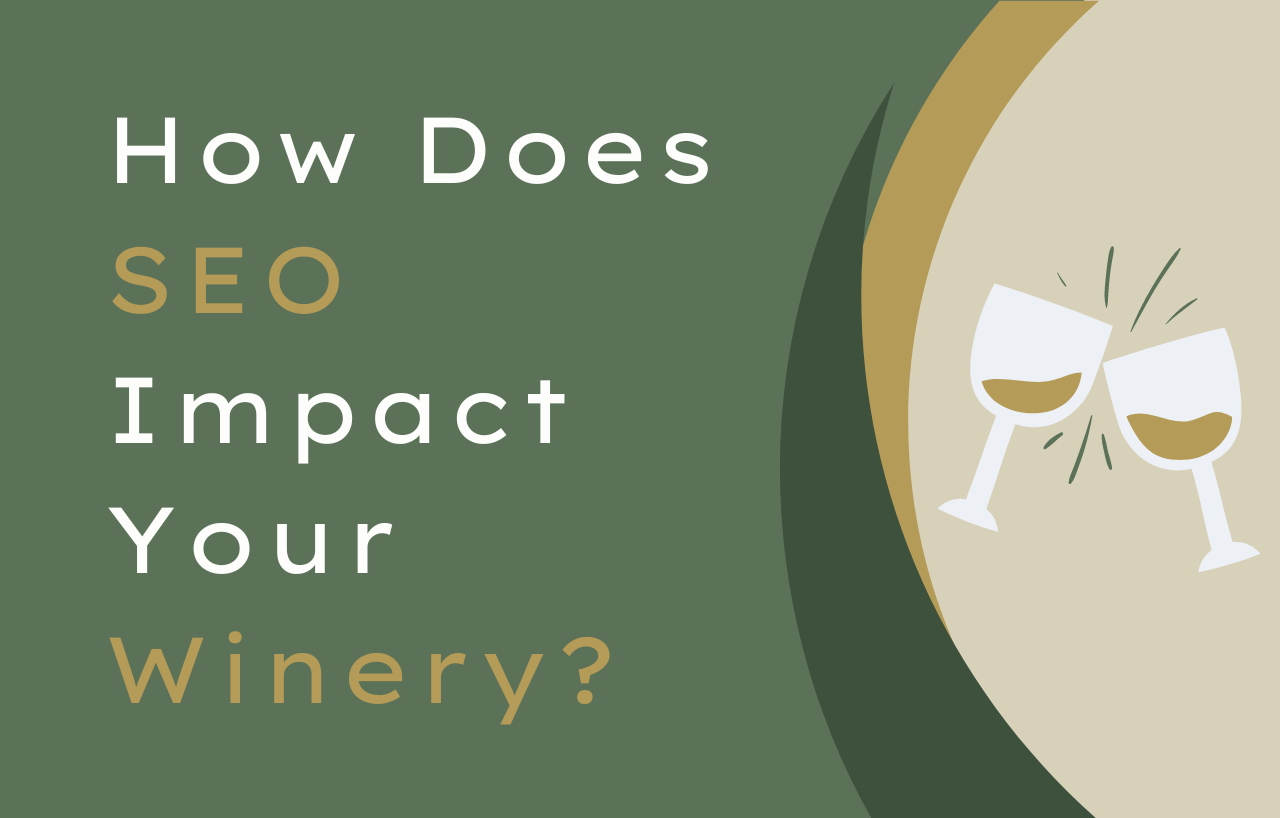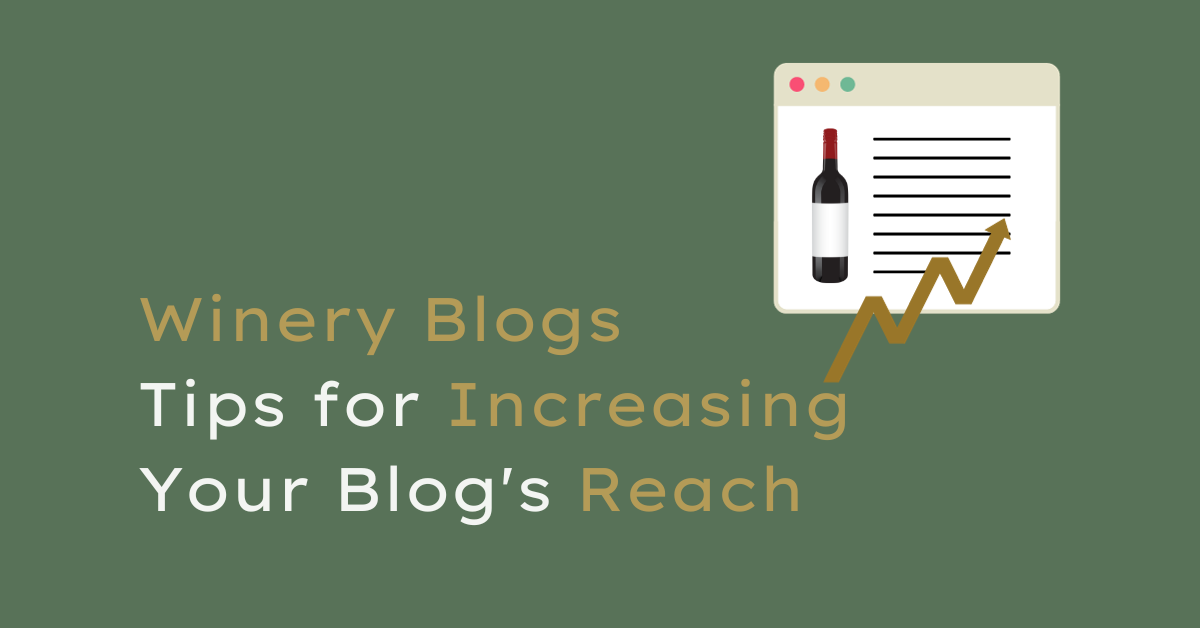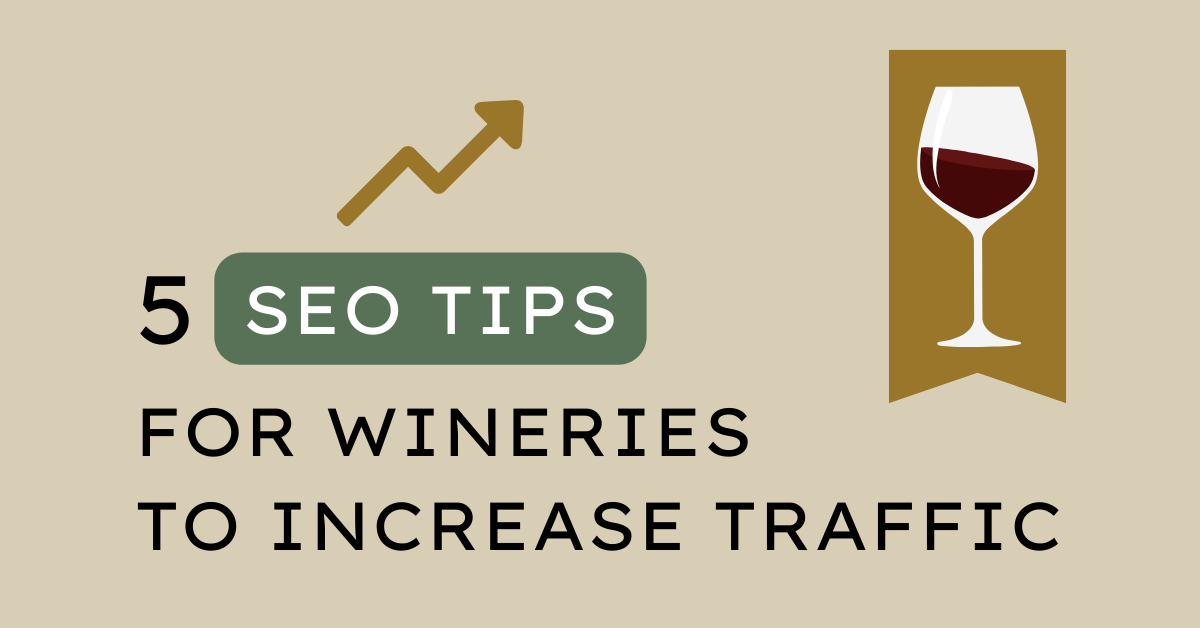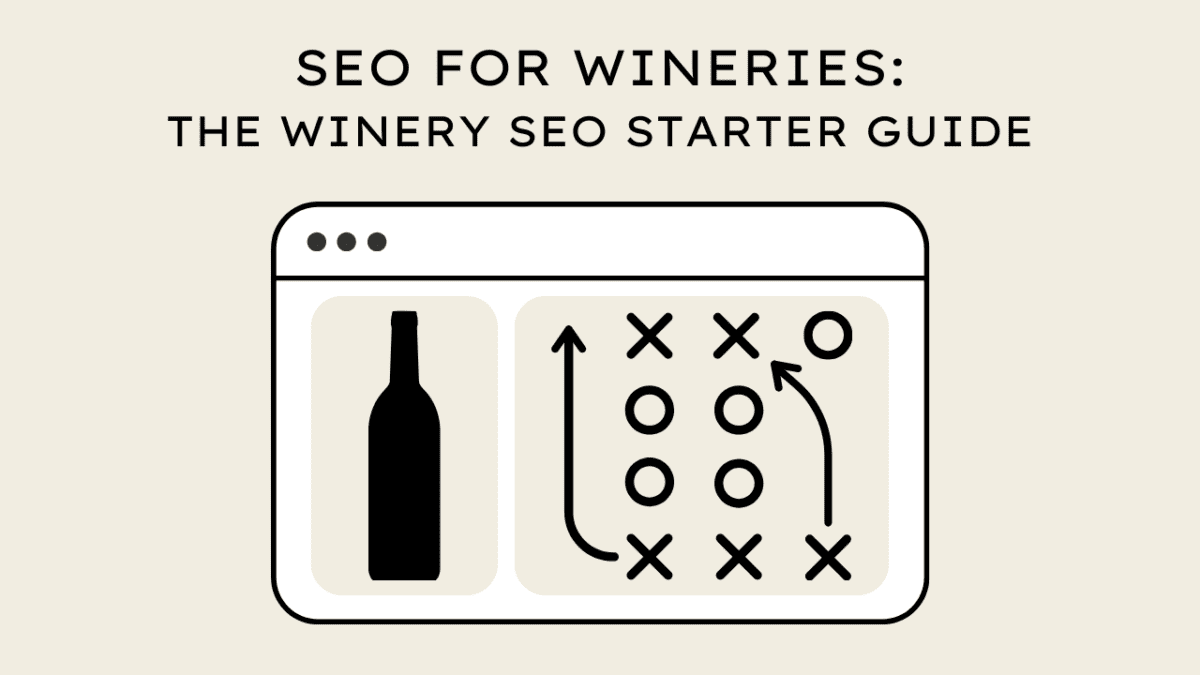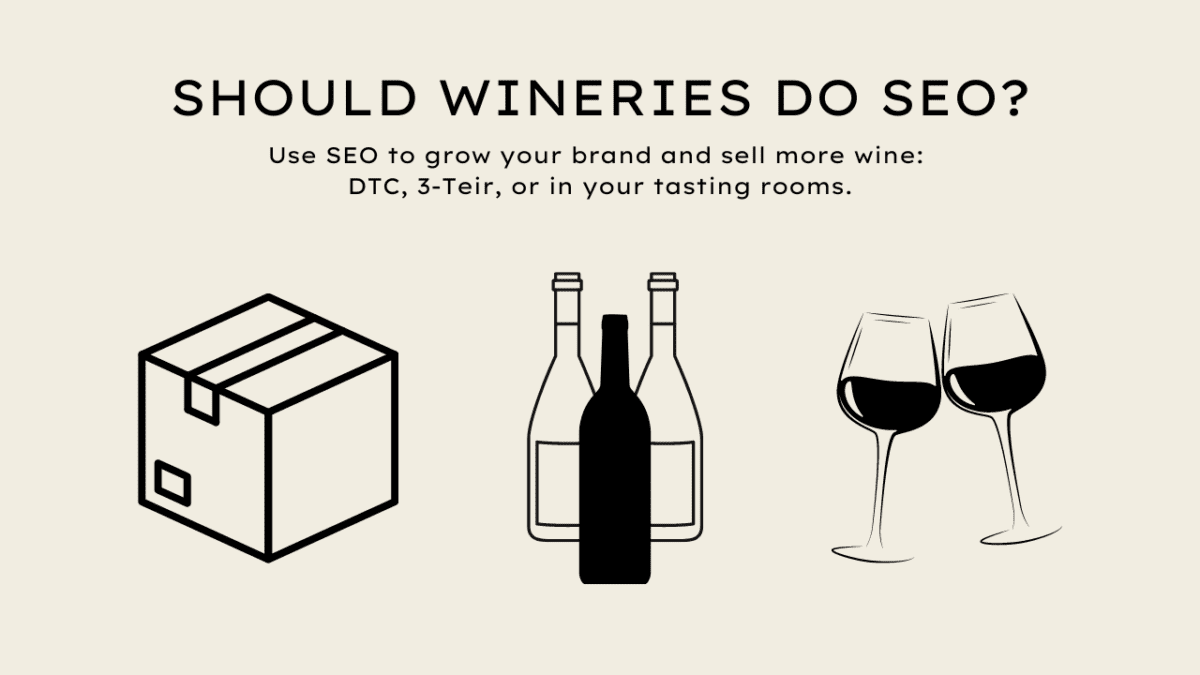How to Get the Most Out of Your Winery Homepage: Homepage Optimization Guide
First impressions matter. If your winery wants to attract more website traffic, your homepage is that first impression for many potential customers.
It’s the first page your potential customers see when they visit your website. It introduces them to your brand, experiences, and products, creating the opportunity to become loyal customers.
The homepage should be the landing page to all the important pages on your website, making it easy for visitors to find what they care most about.
Your homepage is also critical for search engine optimization (SEO). Search engines read your homepage to understand your business and to determine whether you deserve the top spots in the search engine results pages.
In this blog, we’ll explore why your homepage is a critical piece in the wine SEO puzzle. You’ll learn how to improve your homepage to appeal to your target audience and boost your monthly search volume.
Why the homepage is crucial for winery SEO
Before you can implement solid SEO strategies, it helps to understand why the homepage is considered the cornerstone of your winery website.
It gives potential customers their first impression of your brand
Before your online visitors experience your tasting room, before they taste your wine or tour your vineyard, before they hear your story—they’ll see your homepage.
An increasing number of people search for wineries using Google and other search engines. When they find your winery website, they’ll decide whether they’re interested in your brand in less than a second of viewing the homepage. In that first second, winery websites need to grab their audience’s attention and compel them to stay, read, and explore.
Search engines prioritize the homepage
Search engines give the homepage priority in their algorithms because it typically represents the whole website. It’s considered the standard that all of the other pages will meet. Without a strong homepage, your winery will miss out on a ton of traffic, bookings, and sales.
But, search algorithms weigh all pages on the website. The other pages on your website like your blog, tasting room page, and About Us page also contribute to a higher search ranking.
The homepage leads visitors to other pages on your website
Your homepage is also the jumping-off point for visitors to navigate the rest of your website. From the homepage, they’ll decide whether they’re interested enough in your brand to learn more about your winery or read about your tasting room.
And remember, search algorithms give websites a better ranking when they include clear, easy-to-use navigation. Don’t be fancy here.
What humans want to see on your winery website homepage
When designing and creating homepage content for wineries, the best SEO strategies keep human visitors at the heart of their approach and tactics. Here’s what humans want to find when they visit a winery’s homepage:
A thrilling first impression
When wine lovers want to buy a bottle, tour a vineyard, or book a wine tasting, they’re seeking an exceptional experience—starting with your online presence.
Your homepage is an opportunity to wow potential customers with a brilliant online experience. High-quality images and videos of your vineyards, tasting rooms, and wine products should appear on the homepage to help sell the experience to your customers.
Your messaging should speak to a clearly defined target audience. Start with a tight definition of your ideal customer, then conduct keyword research to find the right keywords to attract them. Include these in prominent places like headlines and calls to action (CTAs).
>> When conducting keyword research, be sure to check out the competition. Find which keywords other websites are using to rank higher and attract more customers, and if they’re relevant to your brand, incorporate them into your content. <<
Trust and credibility
Wine drinkers want to know your winery is a professional vineyard run by true wine experts.
A subpar website won’t convince wine drinkers that you’re legit. Establishing a credible brand on your homepage requires you to lean heavily into your content and messaging. Decide who you are as a winery, and what unique selling proposition (USP) you offer wine enthusiasts.
>> For example, if you’re a family-owned winery that works exclusively with organically-grown grapes, work those attributes into your homepage headers and copy. <<
A clear way to visit, book, and buy
Clear calls-to-action are the most crucial component of your winery homepage. Potential customers researching wineries online want to visit a winery, book a tasting or tour, or buy a wine product. Your homepage should make it easy for them to take one of those actions.
Your homepage navigation should be straightforward, with clear, compelling CTAs, leaving no question about what step to take next.
If your visitors encounter any obstacles (called “conversion barriers“) en route to their goal of booking or buying, they’re likely to abandon your website and head for a competitor’s.
>> From your homepage, be sure to have one-click avenues for visitors to book a tasting or buy a product.<<
How to optimize your homepage
Search engines are designed to help human users find the best website for their search query. Here’s how a search algorithm determines whether your website is a good fit for a particular search term or keyword:
Quality content
When you create content for your homepage, it should speak directly to what your potential customers are searching for. Search engines reward websites that effectively answer searcher intent with higher search engine rankings.
Homepage optimization is all about balancing relevant keywords with well-crafted content. Here are the steps we suggest:
- Consider your visitors’ intent.
For example, if they want to book a wine tasting, you should highlight your wine tasting experience on the homepage and create a clear CTA. - Find keywords that align with that intent.
There are free keyword research tools available like SEMrush and ahrefs, but you’ll get more in depth data from paid tools. Choose keywords that align with what your visitors are looking for, and incorporate them naturally into your homepage content. - Structure content so it’s easy to navigate to what they want.
When writing your home page content, structure your content so it’s clear, understandable, and easy to navigate. Avoid using large walls of text; instead, break your text into sections and include clear headings to highlight important information and help potential customers find what they’re looking for. - Write good copy.
High-quality copy will engage your audience, keeping them interested to spend more time exploring your homepage. The longer you keep them engaged with your content, the better your site looks to the search engines.
Reputable backlinks and internal links
Search engines like to see that you provide a deeper level of information for your audience; high-quality backlinks and internal links are an easy and effective way to do that.
Include external links to other websites that you trust and that search engines deem reputable. You can find trustworthy websites by checking their domain authority with tools like this one from Ahrefs.
>> Remember to link to your own website! Use internal links to your product pages, tasting room, or relevant blog post. <<
Speed and mobile-friendliness
Ensuring your homepage and other pages load quickly is critical for human visitors and search engines alike. It should also be mobile-friendly, meaning it’s responsive and smooth when accessed by mobile users.
>> You can test how quickly your website loads with this free tool from PageSpeed Insights. <<
Local SEO techniques
Local SEO is one of your winery’s most important SEO strategies. It helps wine drinkers find your winery for tours and tastings, whether they’re locals or they’re visiting your area on vacation. Check out our blog on local SEO for wineries.
Sample Winery Homepage Layout


Once you’ve gathered all the pieces of your winery homepage, all that’s left is to lay them out in a clear, effective way. We recommend the following:
- Hero Image and Primary CTA: Whether you specialize in wine products, tastings, or other experiences, place your primary offer prominently at the top of the page where potential customers can easily find it.
- Featured Product and Wine Selection: Highlight the wine blends and varieties you’re proudest to offer your customers. They deserve top homepage billing!
- Winery Visits, Tasings, and Experiences: Make it easy for new and existing customers to find and explore ways to visit and experience your gorgeous facility and finely-crafted wines. Showcase them on your winery homepage.
- Unique Selling Propositions (USPs): Your homepage is the perfect place to highlight what differentiates your brand and sets you apart from competitors.
- Wine Club: Feature your wine club on the homepage to give your visitors the opportunity to join the community of wine lovers who enjoy your wines month after month.
>> Don’t forget to add clear site navigation and contact details in the header and footer of your homepage! <<
Examples of great winery homepages
Looking for some inspiration? It’s helpful to explore other winery websites to see what’s working well, and how you might approach your own homepage. Here are a few winery homepages we really admire:
Avaline Wine


Avaline highlights their best-selling premium products, their professional standards, and their customizable wine box and wine club opportunities.
Jordan Winery


Jordan Winery shares their brand story, estate, and experiences on their homepage, supported by high-quality visuals and well-crafted copy.
Bricoleur Vineyards


Bricoleur Vineyards highlights their family legacy and invites their customers to become part of it, featuring vineyard events, experiences, their wine club, and exceptional products on the homepage.
When it comes to winery SEO, the entire site matters
The wine industry is competitive, and more wine brands are improving their websites to attract local drinkers and establish a national following. Solid SEO strategies can help your wine brand appear in the top 10 search results and top the list for local searches, too.
Whether you’re writing a blog post or describing your winery tours, every page and piece of content on your website should work hard to increase your monthly search volume and improve your overall conversions and sales.
We work with wineries from the west coast to the east coast and everywhere in between to help them sell more wine. Book a call with the team to discover how our evergreen wine SEO strategies will help you build a thriving winery.









